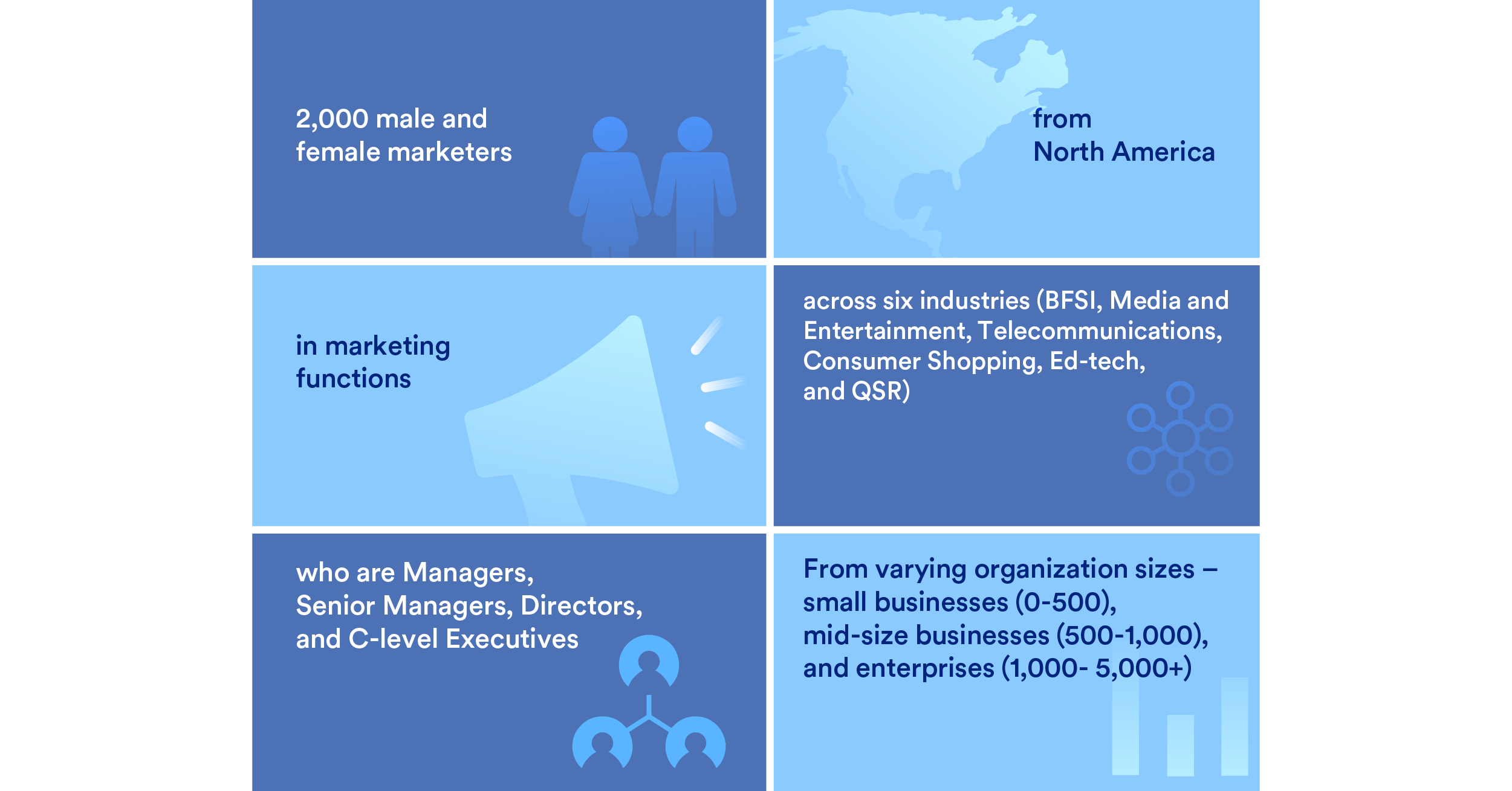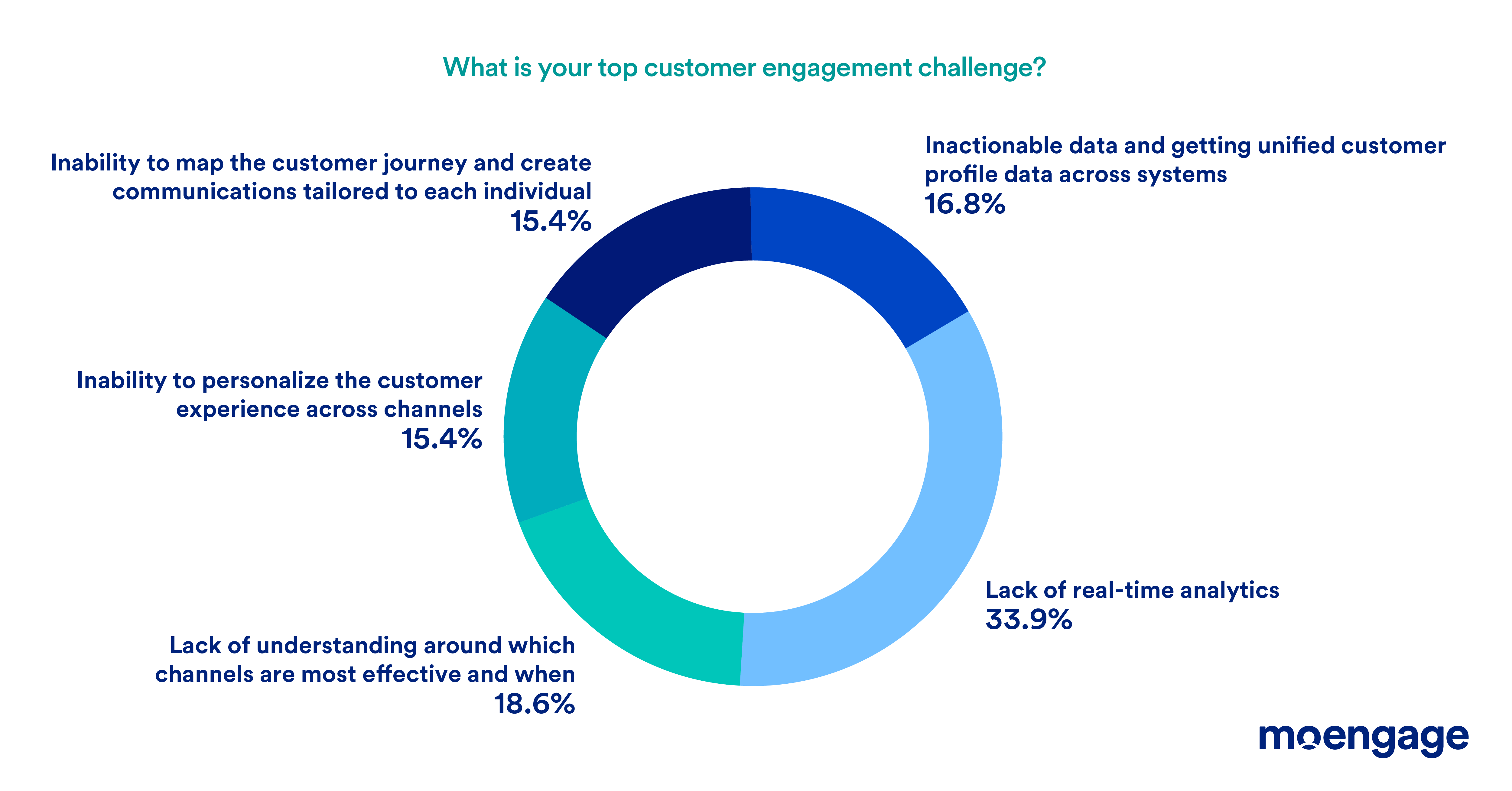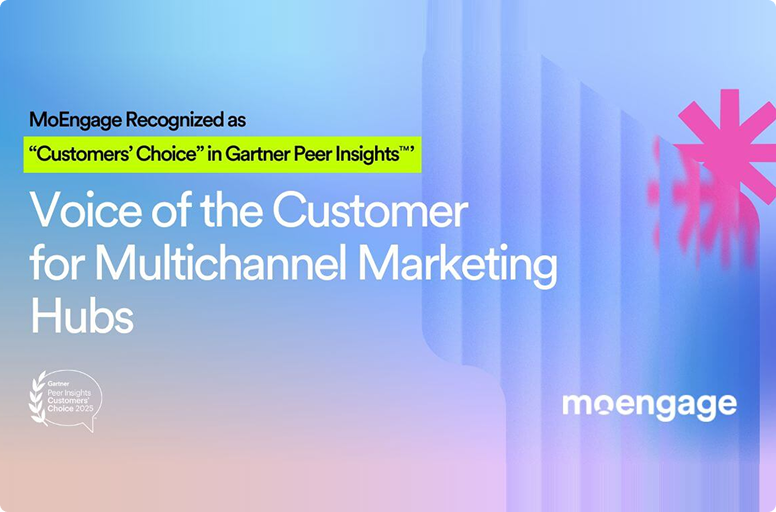🔥 The Customer Engagement Book: Adapt or Die is live!
Download Now


We surveyed 2,000 marketers in North America to understand the impact of insights-led engagement and why it is becoming a priority for marketers. The survey respondents include:


For 33.9% of respondents, real-time analytics is the biggest customer engagement challenge. This is followed by a lack of understanding regarding which channels to utilize, their efficacy, and relevant timing to send the right messaging (18.6%).

An insights-led approach would allow marketers to be guided by insights to build an effective customer engagement strategy, in turn taking a customer-centric approach vs. a campaign-led approach. Here are some best practices to guide you in your transition to an insights-led customer engagement strategy.
Integrate your Martech stack for a holistic view of customers and their journeys with multichannel customer engagement platforms (CEPs).
Tailor content based on individual customer interests, previous purchases, or preferred channels and communication frequency.
Preserve data integrity and reduce cross-functional discrepancies to improve efficiency and productivity at the organization level.
Why should you choose a multichannel CEP with or in place of a CRM?
While Customer Engagement Platforms or CEPs help you collate customer data from multiple sources, Customer Relationship Management (CRMs) assist marketers in examining customer interactions to optimize marketing, drive sales, and improve customer experience. While both platforms help gain a fair understanding of customers, CEPs provide a microscopic, insights-driven, and holistic view. They allow you to build a unified customer profile and drive a personalized, omnichannel experience for your customers. CEPs prosper where CRMs fall short by connecting applications across the marketing ecosystem when it comes to customer engagement.
How does lack of real-time analytics pose a barrier to effective customer engagement?
For 33.9% of North American marketers, lack of real-time analytics is the biggest customer engagement challenge. Despite using a mix of CRM and multichannel CEPs, marketers struggle to drive real-time insights into their engagement strategies so they can course-correct. Our survey data suggests that marketers still depend on campaign-based metrics. If marketers want real-time analytics, they must pivot from a traditional campaign-based approach to a customer-centric strategy.
How deeper customer insights lead to hyper-personalized experiences?
29.4% of North American marketers are using a deeper level of attributes such as preferred language, communication channel, and content affinity to personalize communication. They also measure behavior-based and predictive insights. These metrics allow marketers to individualize customer experiences. Marketers can also hyper-personalize messaging by looking at deeper journey insights such as delightful moments, drop-off moments, and the most optimum path to conversion.



MoEngage is an insights-led platform trusted by 1,350+ global brands like McAfee, Flipkart, Domino’s, Nestle, Deutsche Telekom, and more. MoEngage’s powerful analytics, personalization, and AI capabilities give a 360-degree view of your customers and help you create journeys across digital channels.
© Copyright 2025 MoEngage. All Rights Reserved.

Please wait while you are redirected to the right page...
